重金屬音樂之起源與發展[編輯]
最早起源於西方1960年代後期的硬式搖滾(英語:Hard Rock或Heavy Rock),1970年代初的新一批樂團(齊柏林飛船、黑色安息日、深紫色樂團)將演奏技巧加以改良,華麗搖滾(英語:Glam Rock)潮流過後又出現了一批正式自稱重金屬音樂的樂團猶太祭司(Judas Priest)。
70年代的龐克(英語:Punk)代表樂團性手槍風波過後,在英國的地下搖滾圈子裡突然崛起了一種新式的金屬潮流:英國重金屬新浪潮(英語:New Wave of British Heavy Metal),其中的主力樂團有鐵娘子(Iron Maiden),威豹(Def Leppard),火車頭(Motorhead),撒克遜(Saxon)……幾乎同時,該金屬風波也引起了美國樂團的熱烈反應,金屬製品(Metallica),麥加帝斯(Megadeth),毀滅魔神(Savatage)造就美國重金屬的興起。
自1980年代中期,重金屬樂出現了不同種類的風格分之,比如力量金屬(英語:Power Metal),速度金屬(英語:Speed Metal),鞭笞金屬(英語:Thrash Metal),死亡金屬(英語:Death Metal),黑金屬(英語:Black Metal),哥德金屬(英語:Gothic Metal)等等,因此重金屬音樂不僅僅是所有金屬音樂風格的統稱,其主要含義是指70年代到80年代中期的傳統重金屬流派。
至直1990年代,重金屬樂又再一次出現轉變,當時一些新派的重金屬樂隊把重金屬樂加入了不同的元素和演繹方式,如加入DJ混音、MIDI、說唱等,形成了新的重金屬樂風格-新金屬(Nu-Metal)。主要的樂團有林普巴茲提特(Limp Bizkit)、花錢找死樂團(P.O.D.)、崆樂團(Korn)、滑結樂團(Slipknot)、墮落體制(System of a Down)等。
重金屬(Heavy Metal)必須具備狂吼咆哮或高亢激昂的嗓音、電吉他大量失真的音色、再以密集快速的鼓點和低沉有力的貝司填滿整個聽覺的背景空間,而構成一種含有高爆發力,快速度,重量感及破壞性等元素的改良式搖滾樂。通常泛指傳統的主流派重金屬或無法分類到其他重金屬流派裡的重金屬樂。
Accept、Judas Priest、Iron Maiden、 W.A.S.P.、 metallica等。
Heavy metal (often referred to as metal) is a genre of rock music[1] that developed in the late 1960s and early 1970s, largely in the United Kingdom and the United States.[2] With roots in blues rock and psychedelic rock, the bands that created heavy metal developed a thick, massive sound, characterized by highly amplified distortion, extended guitar solos, emphatic beats, and overall loudness. Heavy metal lyrics and performance styles are often associated with masculinity, aggression and machismo.[3]
The first heavy metal bands such as Led Zeppelin, Deep Purple and Black Sabbath attracted large audiences, though they were often derided by critics, a status common throughout the history of the genre. In the mid-1970s Judas Priest helped spur the genre's evolution by discarding much of its blues influence;[4][5] Motörhead introduced a punk rock sensibility and an increasing emphasis on speed. Bands in the New Wave of British Heavy Metal such as Iron Maiden and Saxon followed in a similar vein. Before the end of the decade, heavy metal fans became known as "metalheads" or "headbangers".
During the 1980s, glam metal became a commercial force with groups like Mötley Crüe and Poison. Underground scenes produced an array of more extreme, aggressive styles: thrash metal broke into the mainstream with bands such as Metallica, Megadeth,Slayer, and Anthrax, while other styles of the most extreme subgenres of metal like death metal and black metal remain subculturalphenomena. Since the mid-1990s, popular styles such as groove metal (e.g. Pantera) which blends extreme metal with hardcore punk, and nu metal (e.g. Slipknot), which often incorporates elements of grunge and hip hop; and metalcore have further expanded the definition of the genre.
Characteristics[edit]
Heavy metal is traditionally characterized by loud distorted guitars, emphatic rhythms, dense bass-and-drum sound, and vigorous vocals. Metal subgenres variously emphasize, alter, or omit one or more of these attributes. New York Times critic Jon Pareles writes, "In the taxonomy of popular music, heavy metal is a major subspecies of hard-rock—the breed with less syncopation, less blues, more showmanship and more brute force."[6] The typical band lineup includes a drummer, a bassist, a rhythm guitarist, a lead guitarist, and a singer, who may or may not be an instrumentalist. Keyboard instruments are sometimes used to enhance the fullness of the sound.[7]
The electric guitar and the sonic power that it projects through amplification has historically been the key element in heavy metal.[8] The heavy metal guitar sound comes from a combined use of high volumes and heavy distortion.[9] With rhythm guitar parts, the "heavy crunch sound in heavy metal...[is created by] palm muting" the strings with the right hand and using distortion.[10] Palm muting creates a tighter, more precise sound and it emphasizes the low end.[11]
The lead role of the guitar in heavy metal often collides with the traditional "frontman" or bandleader role of the vocalist, creating a musical tension as the two "contend for dominance" in a spirit of "affectionate rivalry".[7] Heavy metal "demands the subordination of the voice" to the overall sound of the band. Reflecting metal's roots in the 1960s counterculture, an "explicit display of emotion" is required from the vocals as a sign of authenticity.[12]
Critic Simon Frith claims that the metal singer's "tone of voice" is more important than the lyrics.[13] Metal vocals vary widely in style, from the multioctave, theatrical approach of Judas Priest's Rob Halford and Iron Maiden's Bruce Dickinson, to the gruff style ofMotörhead's Lemmy and Metallica's James Hetfield, to the growling of many death metal performers, and to the harsh screams of black metal.
The prominent role of the bass is also key to the metal sound, and the interplay of bass and guitar is a central element. The bass guitar provides the low-end sound crucial to making the music "heavy".[14] Metal basslines vary widely in complexity, from holding down a low pedal point as a foundation to doubling complex riffs and licks along with the lead and/or rhythm guitars. Some bands feature the bass as a lead instrument, an approach popularized by Metallica's Cliff Burton in the early 1980s.[15] Some bassists use a distorted bass tone, an approach popularized by Burton and Motörhead's Lemmy.
The essence of metal drumming is creating a loud, constant beat for the band using the "trifecta of speed, power, and precision".[16] Metal drumming "requires an exceptional amount of endurance", and drummers have to develop "considerable speed, coordination, and dexterity...to play the intricate patterns" used in metal.[17] A characteristic metal drumming technique is the cymbal choke, which consists of striking a cymbal and then immediately silencing it by grabbing it with the other hand (or, in some cases, the same striking hand), producing a burst of sound. The metal drum setup is generally much larger than those employed in other forms of rock music.[14]
In live performance, loudness—an "onslaught of sound," in sociologist Deena Weinstein's description—is considered vital.[8] In his book Metalheads, psychologist Jeffrey Arnett refers to heavy metal concerts as "the sensory equivalent of war."[18] Following the lead set by Jimi Hendrix, Cream and The Who, early heavy metal acts such as Blue Cheer set new benchmarks for volume. As Blue Cheer's Dick Peterson put it, "All we knew was we wanted more power."[19] A 1977 review of a Motörhead concert noted how "excessive volume in particular figured into the band's impact."[20] Weinstein makes the case that in the same way that melody is the main element of pop and rhythm is the main focus ofhouse music, powerful sound, timbre, and volume are the key elements of metal. She argues that the loudness is designed to "sweep the listener into the sound" and to provide a "shot of youthful vitality."[8]
Musical language[edit]
Rhythm and tempo[edit]
The rhythm in metal songs is emphatic, with deliberate stresses. Weinstein observes that the wide array of sonic effects available to metal drummers enables the "rhythmic pattern to take on a complexity within its elemental drive and insistency."[14] In many heavy metal songs, the main groove is characterized by short, two-note or three-note rhythmic figures—generally made up of 8th or 16th notes. These rhythmic figures are usually performed with a staccato attack created by using a palm-muted technique on the rhythm guitar.[21]
Brief, abrupt, and detached rhythmic cells are joined into rhythmic phrases with a distinctive, often jerky texture. These phrases are used to create rhythmic accompaniment and melodic figures called riffs, which help to establish thematic hooks. Heavy metal songs also use longer rhythmic figures such as whole note- or dotted quarter note-length chords in slow-tempo power ballads. The tempos in early heavy metal music tended to be "slow, even ponderous."[14] By the late 1970s, however, metal bands were employing a wide variety of tempos. In the 2000s decade, metal tempos range from slow ballad tempos (quarter note = 60 beats per minute) to extremely fast blast beat tempos (quarter note = 350 beats per minute).[17]
Harmony[edit]
One of the signatures of the genre is the guitar power chord.[22] In technical terms, the power chord is relatively simple: it involves just one main interval, generally the perfect fifth, though an octave may be added as a doubling of the root. Although the perfect fifth interval is the most common basis for the power chord,[23] power chords are also based on different intervals such as the minor third, major third, perfect fourth, diminished fifth, or minor sixth.[24] Most power chords are also played with a consistent finger arrangement that can be slid easily up and down the fretboard.[25]
Typical harmonic structures[edit]
Heavy metal is usually based on riffs created with three main harmonic traits: modal scale progressions, tritone and chromatic progressions, and the use of pedal points. Traditional heavy metal tends to employ modal scales, in particular the Aeolian and Phrygian modes.[26] Harmonically speaking, this means the genre typically incorporates modal chord progressions such as the Aeolian progressions I-VI-VII, I-VII-(VI), or I-VI-IV-VII and Phrygian progressions implying the relation between I and ♭II (I-♭II-I, I-♭II-III, or I-♭II-VII for example). Tense-sounding chromatic or tritone relationships are used in a number of metal chord progressions.[27][28]
The tritone, an interval spanning three whole tones—such as C and F#—was a forbidden dissonance in medieval ecclesiastical singing, which led monks to call it diabolus in musica—"the devil in music."[29] Because of that original symbolic association, it came to be heard in Western cultural convention as "evil". Heavy metal has made extensive use of the tritone in guitar solos and riffs, such as in the beginning of "Black Sabbath".
Heavy metal songs often make extensive use of pedal point as a harmonic basis. A pedal point is a sustained tone, typically in the bass range, during which at least one foreign (i.e., dissonant) harmony is sounded in the other parts.[30]
Relationship with classical music[edit]
Robert Walser argues that, alongside blues and R&B, the "assemblage of disparate musical styles known...as 'classical music'" has been a major influence on heavy metal since the genre's earliest days. He claims that metal's "most influential musicians have been guitar players who have also studied classical music. Their appropriation and adaptation of classical models sparked the development of a new kind of guitar virtuosity [and] changes in the harmonic and melodic language of heavy metal."[31]
In an article written for Grove Music Online, Walser states that the "1980s brought on ...the widespread adaptation of chord progressions and virtuosic practices from 18th-century European models, especially Bach and Antonio Vivaldi, by influential guitarists such as Ritchie Blackmore, Marty Friedman, Jason Becker, Uli Jon Roth, Eddie Van Halen, Randy Rhoads and Yngwie Malmsteen".[32] Kurt Bachmann of Believer has stated that "If done correctly, metal and classical fit quite well together. Classical and metal are probably the two genres that have the most in common when it comes to feel, texture, creativity."[33]
Although a number of metal musicians cite classical composers as inspiration, classical and metal are rooted in different cultural traditions and practices—classical in the art music tradition, metal in the popular music tradition. As musicologists Nicolas Cook and Nicola Dibben note, "Analyses of popular music also sometimes reveal the influence of 'art traditions.' An example is Walser's linkage of heavy metal music with the ideologies and even some of the performance practices of nineteenth-century Romanticism. However, it would be clearly wrong to claim that traditions such as blues, rock, heavy metal, rap or dance music derive primarily from 'art music.'"[34]
Lyrical themes[edit]
Black Sabbath and the many metal bands they inspired have concentrated lyrically "on dark and depressing subject matter to an extent hitherto unprecedented in any form of pop music," according to scholars David Hatch and Stephen Millward. They take as an example Sabbath's second album Paranoid (1970), which "included songs dealing with personal trauma—'Paranoid' and 'Fairies Wear Boots' (which described the unsavoury side effects of drug-taking) —as well as those confronting wider issues, such as the self-explanatory 'War Pigs' and 'Hand of Doom.'"[35]
Nuclear annihilation was addressed in later metal songs such as Black Sabbath's "Electric Funeral", Iron Maiden's "2 Minutes to Midnight", Ozzy Osbourne's "Killer of Giants",Megadeth's "Rust in Peace... Polaris", and Metallica's "Fight Fire with Fire". Death is a predominant theme in heavy metal, routinely featuring in the lyrics of bands as otherwise widely different as Slayer and W.A.S.P. The more extreme forms of death metal and grindcore tend to have aggressive and gory lyrics.
Deriving from the genre's roots in blues music, sex is another important topic—a thread running from Led Zeppelin's suggestive lyrics to the more explicit references of glam and nu metal bands.[36] Romantic tragedy is a standard theme of gothic and doom metal, as well as of nu metal, where teenage angst is another central topic. Heavy metal songs often feature outlandish, fantasy-inspired lyrics, lending them an escapist quality. Iron Maiden's songs, for instance, are frequently inspired by mythology, fiction, and poetry, as in "Rime of the Ancient Mariner", based on the Samuel Taylor Coleridge poem.
Led Zeppelin lyrics often make reference to The Lord of the Rings as well as other mythology and folklore, such as in the songs "The Battle of Evermore", "Immigrant Song", "Ramble On", "No Quarter", and "Achilles Last Stand". Other examples include Black Sabbath's "The Wizard", Megadeth's "The Conjuring" and "Five Magics", and Judas Priest's "Dreamer Deceiver". Since the 1980s, with the rise of thrash metal and songs such as Metallica's "...And Justice for All" and Megadeth's "Peace Sells", more metal lyrics have included socio-political commentary. Genres such as melodic death metal, progressive metal, and black metal often explore philosophical themes.
The thematic content of heavy metal has long been a target of criticism. According to Jon Pareles, "Heavy metal's main subject matter is simple and virtually universal. With grunts, moans and subliterary lyrics, it celebrates...a party without limits.... [T]he bulk of the music is stylized and formulaic."[6] Music critics have often deemed metal lyrics juvenile and banal, and others have objected to what they see as advocacy of misogyny and the occult. During the 1980s, the Parents Music Resource Center petitioned the U.S. Congress to regulate the popular music industry due to what the group asserted were objectionable lyrics, particularly those in heavy metal songs.[37] Music critic Robert Christgau called metal "an expressive mode it sometimes seems will be with us for as long as ordinary whiteboys fear girls, pity themselves, and are permitted to rage against a world they'll never beat".[38]
In 1990, Judas Priest was sued in American court by the parents of two young men who had shot themselves five years earlier, allegedly after hearing the subliminal statement "do it" in a Priest song. While the case attracted a great deal of media attention, it was ultimately dismissed.[37] In some predominantly Muslim countries, heavy metal has been officially denounced as a threat to traditional values. In countries such as Morocco, Egypt, Lebanon, and Malaysia, there have been incidents of heavy metal musicians and fans being arrested and incarcerated.[39]
Image and fashion[edit]
For certain artists and bands, visual imagery plays a large role in heavy metal. In addition to its sound and lyrics, a heavy metal band's "image" is expressed in album sleeve art, logos, stage sets, clothing, and music videos.[40] Some heavy metal acts such as Alice Cooper, Kiss, Lordi and Gwar have outrageous performance personas and stage shows.
Down-the-back long hair, according to Weinstein, is the "most crucial distinguishing feature of metal fashion."[41] Originally adopted from the hippie subculture, by the 1980s and 1990s heavy metal hair "symbolised the hate, angst and disenchantment of a generation that seemingly never felt at home," according to journalist Nader Rahman. Long hair gave members of the metal community "the power they needed to rebel against nothing in general."[42]
The classic uniform of heavy metal fans consists of light colored, ripped frayed or torn blue jeans, black T-shirts, boots and black leather or jeans jackets.... T-shirts are generally emblazoned with the logos or other visual representations of favorite metal bands."[43] Metal fans also "appropriated elements from the S&M community (chains, metal studs, skulls, leather and crosses)." In the 1980s, a range of sources, from punk and goth music to horror films, influenced metal fashion.[44] Many metal performers of the 1970s and 1980s used radically shaped and brightly colored instruments to enhance their stage appearance.[45]
Fashion and personal style was especially important for glam metal bands of the era. Performers typically wore long, dyed, hairspray-teased hair (hence the nickname, "hair metal"); makeup such as lipstick and eyeliner; gaudy clothing, including leopard-skin-printed shirts or vests and tight denim, leather, or spandex pants; and accessories such as headbands and jewelry.[45] Pioneered by the heavy metal act X Japan in the late 1980s, bands in the Japanese movement known as visual kei—which includes many nonmetal groups—emphasize elaborate costumes, hair, and makeup.[46]
Physical gestures[edit]
Many metal musicians when performing live engage in headbanging, which involves rhythmically beating time with the head, often emphasized by long hair. The il cornuto, or devil horns, hand gesture, also widespread, was popularized by vocalist Ronnie James Diowhile with Black Sabbath and Dio.[28] Although Gene Simmons of Kiss claims to have been the first to make the gesture on the 1977Love Gun album cover, there is speculation as to who started the phenomenon.[47]
Attendees of metal concerts do not dance in the usual sense; Deena Weinstein has argued that this is due to the music's largely male audience and "extreme heterosexualist ideology." She identifies two primary body movements that substitute for dancing: headbanging and an arm thrust that is both a sign of appreciation and a rhythmic gesture.[48] The performance of air guitar is popular among metal fans both at concerts and listening to records at home.[49]
Fan subculture[edit]
Deena Weinstein argues that heavy metal has outlasted many other rock genres largely due to the emergence of an intense, exclusionary, strongly masculine subculture.[50] While the metal fanbase is largely young, white, male, and blue-collar, the group is "tolerant of those outside its core demographic base who follow its codes of dress, appearance, and behavior."[51] Identification with the subculture is strengthened not only by the shared experience of concert-going and shared elements of fashion, but also by contributing to metal magazines and, more recently, websites.[52]
The metal scene has been characterized as a "subculture of alienation", with its own code of authenticity.[53] This code puts several demands on performers: they must appear both completely devoted to their music and loyal to the subculture that supports it; they must appear uninterested in mainstream appeal and radio hits; and they must never "sell out".[54] For the fans themselves, the code promotes "opposition to established authority, and separateness from the rest of society."[55]
Musician and filmmaker Rob Zombie observes, "Most of the kids who come to my shows seem like really imaginative kids with a lot of creative energy they don't know what to do with" and that metal is "outsider music for outsiders. Nobody wants to be the weird kid; you just somehow end up being the weird kid. It's kind of like that, but with metal you have all the weird kids in one place."[56] Scholars of metal have noted the tendency of fans to classify and reject some performers (and some other fans) as "poseurs" "who pretended to be part of the subculture, but who were deemed to lack authenticity and sincerity."[53][57]
Etymology[edit]
The origin of the term "heavy metal" in a musical context is uncertain. The phrase has been used for centuries in chemistry and metallurgy, where the periodic table organizes elements of both light and heavy metals (e.g. uranium). An early use of the term in modern popular culture was by countercultural writer William S. Burroughs. His 1962 novel The Soft Machine includes a character known as "Uranian Willy, the Heavy Metal Kid." Burroughs's next novel, Nova Express (1964), develops the theme, using heavy metal as a metaphor for addictive drugs: "With their diseases and orgasm drugs and their sexless parasite life forms—Heavy Metal People of Uranus wrapped in cool blue mist of vaporized bank notes—And The Insect People of Minraud with metal music."[58] The phrase was later lifted by Sandy Pearlman, who used the term to describe The Byrds for their supposed "aluminium style of context and effect", particularly on their album The Notorious Byrd Brothers (1968).[59]
Metal historian Ian Christe describes what the components of the term mean in "hippiespeak": "heavy" is roughly synonymous with "potent" or "profound," and "metal" designates a certain type of mood, grinding and weighted as with metal.[60] The word "heavy" in this sense was a basic element of beatnik and later countercultural slang, and references to "heavy music"—typically slower, more amplified variations of standard pop fare—were already common by the mid-1960s. Iron Butterfly's debut album, released in early 1968, was titledHeavy. The first use of "heavy metal" in a song lyric is in reference to a motorcycle in the Steppenwolf song "Born to Be Wild", also released that year:[61] "I like smoke and lightning/Heavy metal thunder/Racin' with the wind/And the feelin' that I'm under." A late, and disputed, claim about the source of the term was made by "Chas" Chandler, former manager of the Jimi Hendrix Experience. In a 1995 interview on the PBS program Rock and Roll, he asserted that heavy metal "was a term originated in a New York Times article reviewing a Jimi Hendrix performance," in which the author likened the event to "listening to heavy metal falling from the sky." A source for Chandler's claim has never been found.
The first documented use of the phrase to describe a type of rock music identified to date appears in a review by Barry Gifford. In the May 11, 1968, issue of Rolling Stone, he wrote about the album A Long Time Comin' by U.S. band Electric Flag: "Nobody who's been listening to Mike Bloomfield—either talking or playing—in the last few years could have expected this. This is the new soul music, the synthesis of white blues and heavy metal rock."[62] In January 1970 Lucian K. Truscott IV reviewing Led Zeppelin II for the Village Voice described the sound as "heavy" and made comparisons with Blue Cheer and Vanilla Fudge.[63]
Other early documented uses of the phrase are from reviews by critic Mike Saunders. In the November 12, 1970, issue of Rolling Stone, he commented on an album put out the previous year by the British band Humble Pie: "Safe as Yesterday Is, their first American release, proved that Humble Pie could be boring in lots of different ways. Here they were a noisy, unmelodic, heavy metal-leaden shit-rock band with the loud and noisy parts beyond doubt. There were a couple of nice songs...and one monumental pile of refuse." He described the band's latest, self-titled release as "more of the same 27th-rate heavy metal crap."[64]
In a review of Sir Lord Baltimore's Kingdom Come in the May 1971 Creem, Saunders wrote, "Sir Lord Baltimore seems to have down pat most all the best heavy metal tricks in the book."[65] Creem critic Lester Bangs is credited with popularizing the term via his early 1970s essays on bands such as Led Zeppelin and Black Sabbath.[66] Through the decade,heavy metal was used by certain critics as a virtually automatic putdown. In 1979, lead New York Times popular music critic John Rockwell described what he called "heavy-metal rock" as "brutally aggressive music played mostly for minds clouded by drugs,"[67] and, in a different article, as "a crude exaggeration of rock basics that appeals to white teenagers."[68]
Coined by Black Sabbath drummer, Bill Ward, "downer rock" was one of the earliest terms used to describe this style of music and was applied to acts such as Sabbath andBloodrock. Classic Rock magazine described the downer rock culture revolving around the use of Quaaludes and the drinking of wine.[69] Later the term would be replaced by "heavy metal."[70]
The terms "heavy metal" and "hard rock" have often been used interchangeably, particularly in discussing bands of the 1970s, a period when the terms were largely synonymous.[71] For example, the 1983 Rolling Stone Encyclopedia of Rock & Roll includes this passage: "known for its aggressive blues-based hard-rock style, Aerosmith was the top American heavy-metal band of the mid-Seventies."[72]
History[edit]
Antecedents: 1950s to mid-1960s[edit]
Heavy metal's quintessential guitar style, built around distortion-heavy riffs and power chords, traces its roots to early 1950s Memphis electric blues guitarists such as Joe Hill Louis, Willie Johnson, and particularly Pat Hare,[73][74] who captured a "grittier, nastier, more ferocious electric guitar sound" on records such as James Cotton's "Cotton Crop Blues" (1954);[74] the late 1950s instrumentals of Link Wray, particularly "Rumble" (1958);[75] the early 1960s surf rock music of Dick Dale, including "Let's Go Trippin'" (1961) and "Misirlou" (1962);[76] and The Kingsmen's version of "Louie, Louie" (1963), which made it a garage rock standard.[77]
However, the genre's direct lineage begins in the mid-1960s. American blues music was a major influence on the early British rockers of the era. Bands like The Rolling Stones and The Yardbirds developed blues rock by recording covers of many classic blues songs, often speeding up the tempos. As they experimented with the music, the UK blues-based bands—and the U.S. acts they influenced in turn—developed what would become the hallmarks of heavy metal, in particular, the loud, distorted guitar sound.[19] The Kinks played a major role in popularizing this sound with their 1964 hit "You Really Got Me".[78]
In addition to The Kinks' Dave Davies, other guitarists such as The Who's Pete Townshend and The Yardbirds' Jeff Beck were experimenting with feedback.[79][80] Where the blues rock drumming style started out largely as simple shuffle beats on small kits, drummers began using a more muscular, complex, and amplified approach to match and be heard against the increasingly loud guitar.[81] Vocalists similarly modified their technique and increased their reliance on amplification, often becoming more stylized and dramatic. In terms of sheer volume, especially in live performance, The Who's "bigger-louder-wall-of-Marshalls" approach was seminal.[82]
The combination of blues rock with psychedelic rock formed much of the original basis for heavy metal.[83] One of the most influential bands in forging the merger of genres was the British power trio Cream, who derived a massive, heavy sound from unison riffing between guitarist Eric Clapton and bassist Jack Bruce, as well as Ginger Baker's double bass drumming.[84] Their first two LPs, Fresh Cream(1966) and Disraeli Gears (1967), are regarded as essential prototypes for the future style. The Jimi Hendrix Experience's debut album,Are You Experienced (1967), was also highly influential. Hendrix's virtuosic technique would be emulated by many metal guitarists and the album's most successful single, "Purple Haze", is identified by some as the first heavy metal hit.[19]
During the late sixties, many psychedelic singers such as Arthur Brown, began to create outlandish, theatrical and often macabre performances; which in itself became incredibly influential to many metal acts.[85][86][87] Vanilla Fudge, whose first album also came out in 1967, has been called "one of the few American links between psychedelia and what soon became heavy metal."[88]
Origins: late 1960s and early 1970s[edit]
Critics disagree over who can be thought of as the first heavy metal band. Most credit either Led Zeppelin or Black Sabbath, with American commentators tending to favour Led Zeppelin and British commentators tending to favour Black Sabbath, though many give equal credit to both. A few commentators—mainly American—argue for other groups including Iron Butterfly, Steppenwolf or Blue Cheer.[89]
In 1968, the sound that would become known as heavy metal began to coalesce. That January, the San Francisco band Blue Cheer released a cover of Eddie Cochran's classic "Summertime Blues", from their debut album Vincebus Eruptum, that many consider the first true heavy metal recording.[90] The same month, Steppenwolf released its self-titled debut album, including "Born to Be Wild", which refers to "heavy metal thunder" in describing a motorcycle. In July, another two epochal records came out: The Yardbirds' "Think About It" (from the 1967 Yardbirds album Little Games)—B-side of the band's last single—with a performance by guitarist Jimmy Page; and Iron Butterfly's In-A-Gadda-Da-Vida, with its 17-minute-long title track, a prime candidate for first-ever heavy metal album.
The Jeff Beck Group, whose leader had preceded Page as The Yardbirds' guitarist, released its debut record that same month: Truth featured some of the "most molten, barbed, downright funny noises of all time," breaking ground for generations of metal ax-slingers.[91] In October, Page's new band, Led Zeppelin, made its live debut. The Beatles' White Album, which also came out that month, included "Birthday" and "Helter Skelter", then one of the heaviest-sounding songs ever released by a major band.[92] The Pretty Things' rock opera S.F. Sorrow, released in December, featured "proto heavy metal" songs such as "Old Man Going" and "I See You".[93][94]
In this counterculture period MC5, who began as part of the Detroit garage rock scene, developed a raw distorted style that has been seen as a major influence on the future sound of both heavy metal and later punk music.[95][96] The Stooges also began to establish and influence a heavy metal and later punk sound, with songs such as "I Wanna Be Your Dog", featuring pounding and distorted heavy guitar power chord riffs.[97] Pink Floyd released two of their heaviest and loudest songs to date; "Ibiza Bar" and "The Nile Song", which was regarded as "one of the heaviest songs the band recorded".[98][99]
In January 1969, Led Zeppelin's self-titled debut album was released and reached number 10 on the Billboard album chart. In July, Zeppelin and a power trio with a Cream-inspired, but cruder sound, Grand Funk Railroad, played the Atlanta Pop Festival. That same month, another Cream-rooted trio led by Leslie West released Mountain, an album filled with heavy blues rock guitar and roaring vocals. In August, the group—now itself dubbed Mountain—played an hour-long set at the Woodstock Festival.[100] Grand Funk's debut album,On Time, also came out that month. In the fall, Led Zeppelin II went to number 1 and the album's single "Whole Lotta Love" hit number 4 on the Billboard pop chart. The metal revolution was under way.
Led Zeppelin defined central aspects of the emerging genre, with Page's highly distorted guitar style and singer Robert Plant's dramatic, wailing vocals.[101] Other bands, with a more consistently heavy, "purely" metal sound, would prove equally important in codifying the genre. The 1970 releases by Black Sabbath (Black Sabbath and Paranoid) and Deep Purple (In Rock) were crucial in this regard.[81]
 |
Sample of "Whole Lotta Love" by Led Zeppelin, from Led Zeppelin II (1969). The heavy riff-based song, using lyrics culled from the blues.[102]
|
| Problems playing this file? See media help. | |
Black Sabbath had developed a particularly heavy sound in part due to an industrial accident guitarist Tony Iommi suffered before cofounding the band. Unable to play normally, Iommi had to tune his guitar down for easier fretting and rely on power chords with their relatively simple fingering.[103] Deep Purple had fluctuated between styles in its early years, but by 1969 vocalist Ian Gillan and guitarist Ritchie Blackmore had led the band toward the developing heavy metal style.[104] In 1970, Black Sabbath and Deep Purple scored major UK chart hits with "Paranoid" and "Black Night", respectively.[105][106] That same year, two other British bands released debut albums in a heavy metal mode: Uriah Heep with Very 'Eavy... Very 'Umble and UFO withUFO 1. Bloodrock released their self-titled debut album, containing a collection of heavy guitar riffs, gruff style vocals and sadistic and macabre lyrics.[107] Budgie brought the new metal sound into a power trio context.[108] The occult lyrics and imagery employed by Black Sabbath and Uriah Heep would prove particularly influential; Led Zeppelin also began foregrounding such elements with its fourth album, released in 1971.[109]
On the other side of the Atlantic, the trend-setting group was Grand Funk Railroad, "the most commercially successful American heavy-metal band from 1970 until they disbanded in 1976, [they] established the Seventies success formula: continuous touring."[110] Other bands identified with metal emerged in the U.S., such as Blue Öyster Cult (1972), Aerosmith (1973) and Kiss (1974). In Germany, Scorpions debuted withLonesome Crow in 1972. Blackmore, who had emerged as a virtuoso soloist with Deep Purple's Machine Head (1972), quit the group in 1975 to form Rainbow. These bands also built audiences via constant touring and increasingly elaborate stage shows.[81]
As described above, there are arguments about whether these and other early bands truly qualify as "heavy metal" or simply as "hard rock". Those closer to the music's blues roots or placing greater emphasis on melody are now commonly ascribed the latter label. AC/DC, which debuted with High Voltage in 1975, is a prime example. The 1983 Rolling Stone encyclopedia entry begins, "Australian heavy-metal band AC/DC..."[111] Rock historian Clinton Walker writes, "Calling AC/DC a heavy metal band in the seventies was as inaccurate as it is today.... [They] were a rock 'n' roll band that just happened to be heavy enough for metal."[112] The issue is not only one of shifting definitions, but also a persistent distinction between musical style and audience identification: Ian Christe describes how the band "became the stepping-stone that led huge numbers of hard rock fans into heavy metal perdition."[113]
In certain cases, there is little debate. After Black Sabbath, the next major example is Britain's Judas Priest, which debuted with Rocka Rolla in 1974. In Christe's description,
"Black Sabbath's audience was...left to scavenge for sounds with similar impact. By the mid-1970s, heavy metal aesthetic could be spotted, like a mythical beast, in the moody bass and complex dual guitars of Thin Lizzy, in the stagecraft of Alice Cooper, in the sizzling guitar and showy vocals of Queen, and in the thundering medieval questions of Rainbow.... Judas Priest arrived to unify and amplify these diverse highlights from hard rock's sonic palette. For the first time, heavy metal became a true genre unto itself."[114]
Though Judas Priest did not have a top 40 album in the U.S. until 1980, for many it was the definitive post-Sabbath heavy metal band; its twin-guitar attack, featuring rapid tempos and a nonbluesy, more cleanly metallic sound, was a major influence on later acts.[4] While heavy metal was growing in popularity, most critics were not enamored of the music. Objections were raised to metal's adoption of visual spectacle and other trappings of commercial artifice,[115] but the main offense was its perceived musical and lyrical vacuity: reviewing a Black Sabbath album in the early 1970s, leading critic Robert Christgau described it as "dull and decadent...dim-witted, amoral exploitation."[116]
Mainstream: late 1970s and 1980s[edit]
Punk rock emerged in the mid-1970s as a reaction against contemporary social conditions as well as what was perceived as the overindulgent, overproduced rock music of the time, including heavy metal. Sales of heavy metal records declined sharply in the late 1970s in the face of punk, disco, and more mainstream rock.[115] With the major labels fixated on punk, many newer British heavy metal bands were inspired by the movement's aggressive, high-energy sound and "lo-fi", do it yourself ethos. Underground metal bands began putting out cheaply recorded releases independently to small, devoted audiences.[117]
Motörhead, founded in 1975, was the first important band to straddle the punk/metal divide. With the explosion of punk in 1977, others followed. British music papers such as the NME and Sounds took notice, with Sounds writer Geoff Barton christening the movement the "New Wave of British Heavy Metal".[118] NWOBHM bands including Iron Maiden, Saxon, and Def Leppard reenergized the heavy metal genre. Following the lead set by Judas Priest and Motörhead, they toughened up the sound, reduced its blues elements, and emphasized increasingly fast tempos.[119]
In 1980, the NWOBHM broke into the mainstream, as albums by Iron Maiden and Saxon, as well as Motörhead, reached the British top 10. Though less commercially successful, other NWOBHM bands such as Venom and Diamond Head would have a significant influence on metal's development.[120] In 1981, Motörhead became the first of this new breed of metal bands to top the UK charts with No Sleep 'til Hammersmith.
The first generation of metal bands was ceding the limelight. Deep Purple had broken up soon after Blackmore's departure in 1975, and Led Zeppelin broke up following drummerJohn Bonham's death in 1980. Black Sabbath was routinely upstaged in concert by its opening act, the Los Angeles band Van Halen.[121] Eddie Van Halen established himself as one of the leading metal guitarists of the era—his solo on "Eruption", from the band's self-titled 1978 album, is considered a milestone.[122]
Inspired by Van Halen's success, a metal scene began to develop in Southern California during the late 1970s. Based on the clubs of L.A.'s Sunset Strip, bands such as Quiet Riot, Ratt, Mötley Crüe, and W.A.S.P. were influenced by traditional heavy metal of the earlier 1970s[123] and incorporated the theatrics (and sometimes makeup) of glam rockacts such as Alice Cooper and Kiss.[124] The lyrics of these glam metal bands characteristically emphasized hedonism and wild behavior. Musically, the style was distinguished by rapid-fire shred guitar solos, anthemic choruses, and a relatively pop-oriented melodic approach. The glam metal movement—along with similarly styled acts such as New York's Twisted Sister—became a major force in metal and the wider spectrum of rock music.
 |
Sample of "Purgatory" by Iron Maiden, from the album Killers (1981). The early Iron Maiden sound was a mix of punk rock speed and heavy metal guitar work typical of the New Wave of British Heavy Metal.
Sample of "Hot for Teacher" by Van Halen, from the album 1984 (1984). This sample demonstrates their sound's similarity to the glam metal style.
|
| Problems playing these files? See media help. | |
In the wake of the New Wave of British Heavy Metal and Judas Priest's breakthrough British Steel (1980), heavy metal became increasingly popular in the early 1980s. Many metal artists benefited from the exposure they received on MTV, which began airing in 1981—sales often soared if a band's videos screened on the channel.[125] Def Leppard's videos forPyromania (1983) made them superstars in America and Quiet Riot became the first domestic heavy metal band to top theBillboard chart with Metal Health (1983). One of the seminal events in metal's growing popularity was the 1983 US Festivalin California, where the "heavy metal day" featuring Ozzy Osbourne, Van Halen, Scorpions, Mötley Crüe, Judas Priest, and others drew the largest audiences of the three-day event.[126]
Between 1983 and 1984, heavy metal went from an 8 percent to a 20 percent share of all recordings sold in the U.S.[127]Several major professional magazines devoted to the genre were launched, including Kerrang! (in 1981) and Metal Hammer(in 1984), as well as a host of fan journals. In 1985, Billboard declared, "Metal has broadened its audience base. Metal music is no longer the exclusive domain of male teenagers. The metal audience has become older (college-aged), younger (pre-teen), and more female."[128]
By the mid-1980s, glam metal was a dominant presence on the U.S. charts, music television, and the arena concert circuit. New bands such as L.A.'s Warrant and acts from the East Coast like Poison and Cinderella became major draws, while Mötley Crüe and Ratt remained very popular. Bridging the stylistic gap between hard rock and glam metal, New Jersey's Bon Jovi became enormously successful with its third album, Slippery When Wet (1986). The similarly styled Swedish band Europe became international stars with The Final Countdown (1986). Its title track hit number 1 in 25 countries.[129] In 1987, MTV launched a show, Headbanger's Ball, devoted exclusively to heavy metal videos. However, the metal audience had begun to factionalize, with those in many underground metal scenes favoring more extreme sounds and disparaging the popular style as "light metal" or "hair metal."[130]
One band that reached diverse audiences was Guns N' Roses. In contrast to their glam metal contemporaries in L.A., they were seen as much more raw and dangerous. With the release of their chart-topping Appetite for Destruction (1987), they "recharged and almost single-handedly sustained the Sunset Strip sleaze system for several years."[131] The following year, Jane's Addiction emerged from the same L.A. hard-rock club scene with its major label debut, Nothing's Shocking. Reviewing the album, Rolling Stone declared, "as much as any band in existence, Jane's Addiction is the true heir to Led Zeppelin."[132] The group was one of the first to be identified with the "alternative metal" trend that would come to the fore in the next decade. Meanwhile, new bands such as New York's Winger and New Jersey's Skid Row sustained the popularity of the glam metal style.[133]
Other metal genres: 1980s, 1990s, and 2000s[edit]
Many subgenres of heavy metal developed outside of the commercial mainstream during the 1980s.[134] Several attempts have been made to map the complex world of underground metal, most notably by the editors of Allmusic, as well as critic Garry Sharpe-Young. Sharpe-Young's multivolume metal encyclopedia separates the underground into five major categories: thrash metal, death metal, black metal, power metal, and the related subgenres of doom and gothic metal.[135]
Thrash metal[edit]
Thrash metal emerged in the early 1980s under the influence of hardcore punk and the New Wave of British Heavy Metal,[136]particularly songs in the revved-up style known as speed metal. The movement began in the United States, with Bay Area thrash metalbeing the leading scene. The sound developed by thrash groups was faster and more aggressive than that of the original metal bands and their glam metal successors.[136] Low-register guitar riffs are typically overlaid with shredding leads. Lyrics often express nihilisticviews or deal with social issues using visceral, gory language. Thrash has been described as a form of "urban blight music" and "a palefaced cousin of rap".[137]
 |
Slayer's "Angel of Death", from Reign in Blood (1986), which features the fast, technically complex musicianship typical of thrash metal
|
| Problems playing this file? See media help. | |
The subgenre was popularized by the "Big Four of Thrash": Metallica, Anthrax, Megadeth, and Slayer.[138] Three German bands,Kreator, Sodom, and Destruction, played a central role in bringing the style to Europe. Others, including San Francisco Bay Area'sTestament and Exodus, New Jersey's Overkill, and Brazil's Sepultura, also had a significant impact. Although thrash began as an underground movement, and remained largely that for almost a decade, the leading bands of the scene began to reach a wider audience. Metallica brought the sound into the top 40 of the Billboard album chart in 1986 with Master of Puppets, the genre's first platinum record.[139] Two years later, the band's ...And Justice for All hit number 6, while Megadeth and Anthrax also had top 40 records on the American charts.[140]
Though less commercially successful than the rest of the Big Four, Slayer released one of the genre's definitive records:Reign in Blood (1986) was credited for incorporating heavier guitar timbres, and for including explicit depictions of death, suffering, violence and occult into thrash metal's lyricism.[141] Slayer attracted a following among far-right skinheads, and accusations of promoting violence and Nazi themes have dogged the band.[142] Even though Slayer did not received substantial media exposure, their music played key role in the development of extreme metal.[143]
In the early 1990s, thrash achieved breakout success, challenging and redefining the metal mainstream.[144] Metallica's self-titled 1991 album topped the Billboard chart,[145] as the band established international following.[146] Megadeth's Countdown to Extinction (1992) debuted at number two,[147] Anthrax and Slayer cracked the top 10,[148] and albums by regional bands such as Testament and Sepultura entered the top 100.[149]
Death metal[edit]
Thrash soon began to evolve and split into more extreme metal genres. "Slayer's music was directly responsible for the rise of death metal," according to MTV News.[151] The NWOBHM band Venom was also an important progenitor. The death metal movement in both North America and Europe adopted and emphasized the elements of blasphemy and diabolism employed by such acts. Florida's Death and the Bay Area's Possessedare recognized as seminal bands in the style. Both groups have been credited with inspiring the subgenre's name, the latter via its 1984 demo Death Metal and the song "Death Metal", from its 1985 debut album Seven Churches (1985). In the late 1980s and early 1990s, Swedish death metal became notable and melodic forms of death metal was created.[152]
Death metal utilizes the speed and aggression of both thrash and hardcore, fused with lyrics preoccupied with Z-grade slasher movie violence andSatanism.[153] Death metal vocals are typically bleak, involving guttural "death growls," high-pitched screaming, the "death rasp,"[154] and other uncommon techniques.[155] Complementing the deep, aggressive vocal style are downtuned, highly distorted guitars[153][154] and extremely fast percussion, often with rapid double bass drumming and "wall of sound"–style blast beats. Frequent tempo and time signature changes andsyncopation are also typical.
|
|
Death metal, like thrash metal, generally rejects the theatrics of earlier metal styles, opting instead for an everyday look of ripped jeans and plain leather jackets.[156] One major exception to this rule wasDeicide's Glen Benton, who branded an inverted cross on his forehead and wore armor on stage.Morbid Angel adopted neo-fascist imagery.[156] These two bands, along with Death and Obituary, were leaders of the major death metal scene that emerged in Florida in the mid-1980s. In the UK, the related style of grindcore, led by bands such as Napalm Deathand Extreme Noise Terror, emerged from the anarcho-punk movement.[153]
Black metal[edit]
The first wave of black metal emerged in Europe in the early and mid-1980s, led by Britain's Venom, Denmark's Mercyful Fate, Switzerland'sHellhammer and Celtic Frost, and Sweden's Bathory. By the late 1980s, Norwegian bands such as Mayhem and Burzum were heading a second wave.[157] Black metal varies considerably in style and production quality, although most bands emphasize shrieked and growled vocals, highly distorted guitars frequently played with rapid tremolo picking, a "dark" atmosphere[155] and intentionally lo-fi production, with ambient noise and background hiss.[158]
Satanic themes are common in black metal, though many bands take inspiration from ancient paganism, promoting a return to supposed pre-Christian values.[159] Numerous black metal bands also "experiment with sounds from all possible forms of metal, folk, classical music, electronica and avant-garde."[154] Darkthrone drummer Fenriz explains, "It had something to do with production, lyrics, the way they dressed and a commitment to making ugly, raw, grim stuff. There wasn't a generic sound."[160]
By 1990, Mayhem was regularly wearing corpsepaint; many other black metal acts also adopted the look. Bathory inspired the Viking metaland folk metal movements and Immortal brought blast beats to the fore. Some bands in the Scandinavian black metal scene became associated with considerable violence in the early 1990s,[161] with Mayhem and Burzum linked to church burnings. Growing commercial hype around death metal generated a backlash; beginning in Norway, much of the Scandinavian metal underground shifted to support a black metal scene that resisted being co-opted by the commercial metal industry.[162] According to former Gorgoroth vocalist Gaahl, "Black Metal was never meant to reach an audience.... [We] had a common enemy which was, of course, Christianity, socialism and everything that democracy stands for."[160]
|
|
By 1992, black metal scenes had begun to emerge in areas outside Scandinavia, including Germany, France, and Poland.[163] The 1993 murder of Mayhem's Euronymous by Burzum's Varg Vikernes provoked intensive media coverage.[160] Around 1996, when many in the scene felt the genre was stagnating,[164] several key bands, including Burzum and Finland's Beherit, moved toward anambient style, while symphonic black metal was explored by Sweden's Tiamat and Switzerland's Samael.[165] In the late 1990s and early 2000s decade, Norway's Dimmu Borgir brought black metal closer to the mainstream,[166] as did Cradle of Filth.[167]
|
Sample of Sonata Arctica's Don't Say a Word from the Reckoning Night album (2004).
|
Power metal[edit]
During the late 1980s, the power metal scene came together largely in reaction to the harshness of death and black metal.[168]Though a relatively underground style in North America, it enjoys wide popularity in Europe, Japan, and South America. Power metal focuses on upbeat, epic melodies and themes that "appeal to the listener's sense of valour and loveliness."[169] The prototype for the sound was established in the mid-to-late 1980s by Germany's Helloween, which combined the power riffs, melodic approach, and high-pitched, "clean" singing style of bands like Judas Priest and Iron Maiden with thrash's speed and energy, "crystalliz[ing] the sonic ingredients of what is now known as power metal."[170]
Traditional power metal bands like Sweden's HammerFall, England's DragonForce, and Florida's Iced Earth have a sound clearly indebted to the classic NWOBHM style.[171] Many power metal bands such as Florida's Kamelot, Finnish groups Nightwish and Sonata Arctica, Italy's Rhapsody of Fire, and Russia's Catharsis feature a keyboard-based "symphonic" sound, sometimes employing orchestras and opera singers. Power metal has built a strong fanbase in Japan and South America, where bands like Brazil's Angra and Argentina's Rata Blanca are popular.
Closely related to power metal is progressive metal, which adopts the complex compositional approach of bands like Rush and King Crimson. This style emerged in the United States in the early and mid-1980s, with innovators such as Queensrÿche, Fates Warning, andDream Theater. The mix of the progressive and power metal sounds is typified by New Jersey's Symphony X, whose guitarist Michael Romeo is among the most recognized of latter-day shredders.[172]
Doom and gothic metal[edit]
Emerging in the mid-1980s with such bands as California's Saint Vitus, Maryland's The Obsessed, Chicago's Trouble, and Sweden's Candlemass, the doom metal movement rejected other metal styles' emphasis on speed, slowing its music to a crawl. Doom metal traces its roots to the lyrical themes and musical approach of early Black Sabbath.[173]The Melvins have also been a significant influence on doom metal and a number of its subgenres.[174] Doom emphasizes melody, melancholy tempos, and a sepulchral mood relative to many other varieties of metal.[175]
The 1991 release of Forest of Equilibrium, the debut album by UK band Cathedral, helped spark a new wave of doom metal. During the same period, the doom-death fusion style of British bands Paradise Lost, My Dying Bride, and Anathema gave rise to European gothic metal,[176] with its signature dual-vocalist arrangements, exemplified by Norway'sTheatre of Tragedy and Tristania. New York's Type O Negative introduced an American take on the style.[177]
|
|
In the United States, sludge metal, mixing doom and hardcore, emerged in the late 1980s—Eyehategod and Crowbar were leaders in a major Louisiana sludge scene. Early in the next decade, California's Kyuss and Sleep, inspired by the earlier doom metal bands, spearheaded the rise of stoner metal,[178] while Seattle's Earth helped develop the drone metal subgenre.[179] The late 1990s saw new bands form such as the Los Angeles–based Goatsnake, with a classic stoner/doom sound, and Sunn O))), which crosses lines between doom, drone, and dark ambient metal—the New York Times has compared their sound to an "Indian raga in the middle of an earthquake".[175]
New fusions: 1990s and early 2000s[edit]
|
|
The era of metal's mainstream dominance in North America came to an end in the early 1990s with the emergence of Nirvana and other grunge bands, signaling the popular breakthrough of alternative rock.[180] Grunge acts were influenced by the heavy metal sound, but rejected the excesses of the more popular metal bands, such as their "flashy and virtuosic solos" and "appearance-driven"MTV orientation.[133]
Glam metal fell out of favor due not only to the success of grunge,[181] but also because of the growing popularity of the more aggressive sound typified by Metallica and the post-thrash groove metal of Pantera and White Zombie.[182] A few new, unambiguously metal bands had commercial success during the first half of the decade—Pantera's Far Beyond Driven topped the Billboard chart in 1994—but, "In the dull eyes of the mainstream, metal was dead."[183] Some bands tried to adapt to the new musical landscape. Metallica revamped its image: the band members cut their hair and, in 1996, headlined the alternative musical festival Lollapalooza founded by Jane's Addiction singer Perry Farrell. While this prompted a backlash among some long-time fans,[184] Metallica remained one of the most successful bands in the world into the new century.[185]
Like Jane's Addiction, many of the most popular early 1990s groups with roots in heavy metal fall under the umbrella term "alternative metal."[186] Bands in Seattle's grunge scene such as Soundgarden, credited as making a "place for heavy metal in alternative rock",[187] and Alice in Chains were at the center of the alternative metal movement. The label was applied to a wide spectrum of other acts that fused metal with different styles: Faith No More combined their alternative rock sound with punk, funk, metal, and hip hop;Primus joined elements of funk, punk, thrash metal, and experimental music; Tool mixed metal and progressive rock; bands such asFear Factory, Ministry and Nine Inch Nails began incorporating metal into their industrial sound, and vice versa, respectively; and Marilyn Manson went down a similar route, while also employing shock effects of the sort popularized by Alice Cooper. Alternative metal artists, though they did not represent a cohesive scene, were united by their willingness to experiment with the metal genre and their rejection of glam metal aesthetics (with the stagecraft of Marilyn Manson and White Zombie—also identified with alt-metal—significant, if partial, exceptions).[186] Alternative metal's mix of styles and sounds represented "the colorful results of metal opening up to face the outside world."[188]
In the mid- and late 1990s came a new wave of U.S. metal groups inspired by the alternative metal bands and their mix of genres.[189]Dubbed "nu metal", bands such as Slipknot, Linkin Park, Limp Bizkit, Papa Roach, P.O.D., Korn and Disturbed incorporated elements ranging from death metal to hip hop, often including DJs and rap-style vocals. The mix demonstrated that "pancultural metal could pay off."[190] Nu metal gained mainstream success through heavy MTV rotation and Ozzy Osbourne's 1996 introduction of Ozzfest, which led the media to talk of a resurgence of heavy metal.[191] In 1999, Billboard noted that there were more than 500 specialty metal radio shows in the U.S., nearly three times as many as ten years before.[192] While nu metal was widely popular, traditional metal fans did not fully embrace the style.[193] By early 2003, the movement's popularity was on the wane, though several nu metal acts such as Korn or Limp Bizkit retained substantial followings.[194]
Recent trends: mid–late 2000s[edit]
Metal remained popular in the 2000s, particularly in continental Europe. By the new millennium Scandinavia had emerged as one of the areas producing innovative and successful bands, while Belgium, The Netherlands and especially Germany were the most significant markets.[195] Established continental metal bands that placed multiple albums in the top 20 of the German charts between 2003 and 2008, including Finnish band Children of Bodom,[196] Norwegian act Dimmu Borgir,[197] Germany's Blind Guardian[198] and Sweden's HammerFall.[199]
Metalcore, a hybrid of extreme metal and hardcore punk,[200] emerged as a commercial force in the mid-2000s decade. It is rooted in thecrossover thrash style developed two decades earlier by bands such as Suicidal Tendencies, Dirty Rotten Imbeciles, and Stormtroopers of Death.[201] Through the 1990s, metalcore was mostly an underground phenomenon;[202] early bands include Earth Crisis,[203][204][205]Hogan's Heroes,[206][207] Converge,[204] Hatebreed[205][208] and Shai Hulud.[209][210] By 2004, melodic metalcore—influenced as well bymelodic death metal—was popular enough that Killswitch Engage's The End of Heartache and Shadows Fall's The War Within debuted at numbers 21 and 20, respectively, on the Billboard album chart.[211]
Welsh band Bullet for My Valentine's third studio album Fever debuted at position number 3 on The Billboard 200 and number 1 onBillboard's Rock and Alternative charts, making it the band's most successful record to date. In recent years, metalcore bands have received prominent slots at Ozzfest and the Download Festival. Lamb of God, a groove metal band, hit the Billboard top 10 in 2006 with Sacrament. The success of these bands and others such as Trivium and Avenged Sevenfold[212] which have released both metalcore and straight-ahead thrash albums. Evolving even further from metalcore comes mathcore, a more rhythmically complicated and progressive style brought to light by bands such as The Dillinger Escape Plan, Converge, and Protest the Hero.[213] Mathcore's main defining quality is the use of odd time signatures, and has been described to possess rhythmic comparability to free Jazz.[214]
Mastodon, which plays in a progressive/sludge style, has inspired claims of a metal revival in the United States, dubbed by some critics the "New Wave of American Heavy Metal".[215]
The term "retro-metal" has been applied to such bands as Texas-based The Sword, California's High on Fire, Sweden's Witchcraft[216] and Australia's Wolfmother.[216][217] The Sword's Age of Winters (2006) drew heavily on the work of Black Sabbath and Pentagram;[218]Witchcraft added elements of folk rock and psychedelic rock;[219] and Wolfmother's self-titled 2005 debut album had "Deep Purple-ish organs," "Jimmy Page-worthy chordal riffing," and lead singer Andrew Stockdale howling "notes that Robert Plant can't reach anymore."[217]
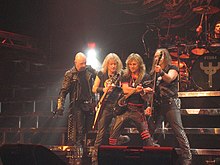

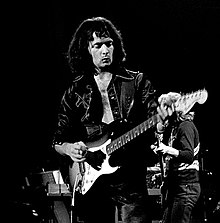
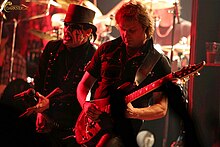




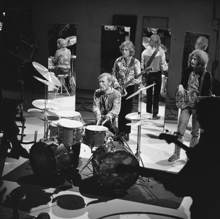
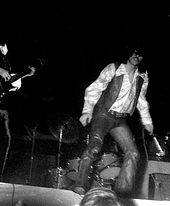
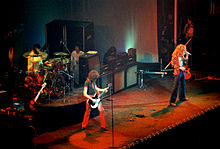

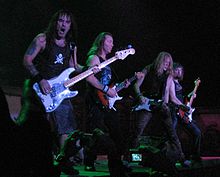




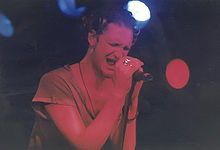
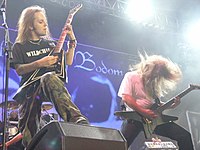
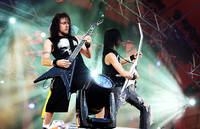





 留言列表
留言列表
 {{ article.title }}
{{ article.title }}

